Michael Robbins in Harper’s Magazine:
 I first read the Book of Revelation in a green pocket-size King James New Testament published by the motel missionaries Gideons International. I was in seventh grade. I remember reading the tiny Bible in the hallway outside my chemistry classroom, in which lurked a boy I loathed named Glenn, who would make fun of my Journey T-shirts. It would be years before I really got into Iron Maiden, but at my friend Jonathan’s house I’d heard Barry Clayton’s creepy recitation of Revelation 13:18 on the title track of The Number of the Beast: “Let him who hath understanding reckon the number of the beast: for it is a human number; its number is six hundred and sixty-six.”
I first read the Book of Revelation in a green pocket-size King James New Testament published by the motel missionaries Gideons International. I was in seventh grade. I remember reading the tiny Bible in the hallway outside my chemistry classroom, in which lurked a boy I loathed named Glenn, who would make fun of my Journey T-shirts. It would be years before I really got into Iron Maiden, but at my friend Jonathan’s house I’d heard Barry Clayton’s creepy recitation of Revelation 13:18 on the title track of The Number of the Beast: “Let him who hath understanding reckon the number of the beast: for it is a human number; its number is six hundred and sixty-six.”
I wanted to know what that was all about. My father was so dismissive of any form of religious thought that I was in second grade before I realized that some people believed in the devil, whom I had drawn for an art project. My teacher wouldn’t post my drawing on the wall with the others, on the grounds that it might offend Christian sensibilities, though it was a standard cartoonish red devil with horns, pitchfork, and pointy tail. I was nonplussed: surely Satan was a fictional character, like Santa Claus or Batman. (Of course he is, my dad explained that night, but not everyone realizes this.)
More here.

 Over the years, Marsha Farmer had learned what to look for. As she drove the back roads of rural Alabama, she kept an eye out for dilapidated homes and trailers with wheelchair ramps. Some days, she’d ride the one-car ferry across the river to Lower Peach Tree and other secluded hamlets where a few houses lacked running water and bare soil was visible beneath the floorboards. Other times, she’d scan church prayer lists for the names of families with ailing members.
Over the years, Marsha Farmer had learned what to look for. As she drove the back roads of rural Alabama, she kept an eye out for dilapidated homes and trailers with wheelchair ramps. Some days, she’d ride the one-car ferry across the river to Lower Peach Tree and other secluded hamlets where a few houses lacked running water and bare soil was visible beneath the floorboards. Other times, she’d scan church prayer lists for the names of families with ailing members. After the Internet arrived and flooded the market with new voices, some outlets found that instead of going after the whole audience, it made more financial sense to pick one demographic and dominate it. How? That’s easy. You feed the audience news you know they will like. When Fox had success targeting suburban and rural, mostly white, mostly older conservatives – the late Fox News chief Roger Ailes infamously described his audience as “55 to dead” – other companies soon followed suit.
After the Internet arrived and flooded the market with new voices, some outlets found that instead of going after the whole audience, it made more financial sense to pick one demographic and dominate it. How? That’s easy. You feed the audience news you know they will like. When Fox had success targeting suburban and rural, mostly white, mostly older conservatives – the late Fox News chief Roger Ailes infamously described his audience as “55 to dead” – other companies soon followed suit. Physicists have purportedly created the first-ever wormhole, a kind of tunnel theorized in 1935 by Albert Einstein and Nathan Rosen that leads from one place to another by passing into an extra dimension of space.
Physicists have purportedly created the first-ever wormhole, a kind of tunnel theorized in 1935 by Albert Einstein and Nathan Rosen that leads from one place to another by passing into an extra dimension of space. With or without the COVID-19 pandemic, China has maintained a greater capacity to control the internal movement of its population than perhaps any other country in the world. This is primarily enforced through the household registration system (hukou) which has linked the provision of social services to regional locales since 1958. Under Deng Xiaoping, China set about constructing a national labor market, which today allows citizens to enjoy the narrow market freedom to seek employment throughout the country. But social citizenship, including access to state subsidized health care, education, pensions, and housing, is structured at the level of the city.
With or without the COVID-19 pandemic, China has maintained a greater capacity to control the internal movement of its population than perhaps any other country in the world. This is primarily enforced through the household registration system (hukou) which has linked the provision of social services to regional locales since 1958. Under Deng Xiaoping, China set about constructing a national labor market, which today allows citizens to enjoy the narrow market freedom to seek employment throughout the country. But social citizenship, including access to state subsidized health care, education, pensions, and housing, is structured at the level of the city. Man is an
Man is an T
T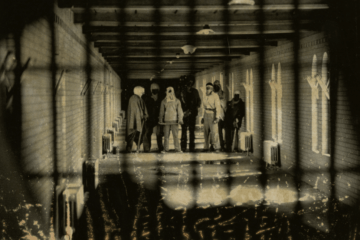 On a May evening in 1972—eight months after the uprising—Tisdale passed through Attica’s security gates and held his first workshop. He began by asking his students, “What is poetry?” He recorded their answers in his journal: “Personal, deals with emotions, historical, compact (concise), eternal, revolutionary, beauty, rhyme, rhythm, a verbal X-ray of the soul.” Knowing he was under nearly as much scrutiny as the imprisoned men, Tisdale approached the “revolutionary” aspects of poetry with caution. Attica’s administrators feared another revolt. Officers were always present for the workshops; Tisdale’s journal makes special note of the occasions when a Black officer, recruited after the uprising, attended. Regardless of the surveillance, the workshop began to gel after the first few weeks as participants became more comfortable with Tisdale. He noticed quickly that many contributors possessed great skill as poets. They told him that nothing had changed at Attica since the revolt; prison conditions remained abhorrent. They shared an urgency to write about the violence they had witnessed and America’s carceral system in general, and they did not hold back.
On a May evening in 1972—eight months after the uprising—Tisdale passed through Attica’s security gates and held his first workshop. He began by asking his students, “What is poetry?” He recorded their answers in his journal: “Personal, deals with emotions, historical, compact (concise), eternal, revolutionary, beauty, rhyme, rhythm, a verbal X-ray of the soul.” Knowing he was under nearly as much scrutiny as the imprisoned men, Tisdale approached the “revolutionary” aspects of poetry with caution. Attica’s administrators feared another revolt. Officers were always present for the workshops; Tisdale’s journal makes special note of the occasions when a Black officer, recruited after the uprising, attended. Regardless of the surveillance, the workshop began to gel after the first few weeks as participants became more comfortable with Tisdale. He noticed quickly that many contributors possessed great skill as poets. They told him that nothing had changed at Attica since the revolt; prison conditions remained abhorrent. They shared an urgency to write about the violence they had witnessed and America’s carceral system in general, and they did not hold back.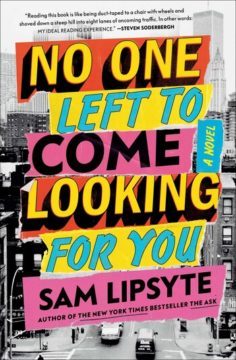 ONE OF SAM LIPSYTE’S SIGNATURE ACCOMPLISHMENTS has been to find the baroque musicality in the emergent vocabularies—commercial, bureaucratic, wellness-industrial, pornographic—opened up by twenty-first-century English. “Hark would shepherd the sermon weirdward,” he writes in his 2019 novel about an entrepreneurial inspirational speaker, “the measured language fracturing, his docile flock of reasonable tips for better corporate living driven off the best practices cliff, the crowd in horrified witness.” Across his first six books, Lipsyte’s sentences have been excessive, pun-laden, and lyrically raunchy. When language threatens to sound measured, a character with a zany name can be counted on to fracture it.
ONE OF SAM LIPSYTE’S SIGNATURE ACCOMPLISHMENTS has been to find the baroque musicality in the emergent vocabularies—commercial, bureaucratic, wellness-industrial, pornographic—opened up by twenty-first-century English. “Hark would shepherd the sermon weirdward,” he writes in his 2019 novel about an entrepreneurial inspirational speaker, “the measured language fracturing, his docile flock of reasonable tips for better corporate living driven off the best practices cliff, the crowd in horrified witness.” Across his first six books, Lipsyte’s sentences have been excessive, pun-laden, and lyrically raunchy. When language threatens to sound measured, a character with a zany name can be counted on to fracture it.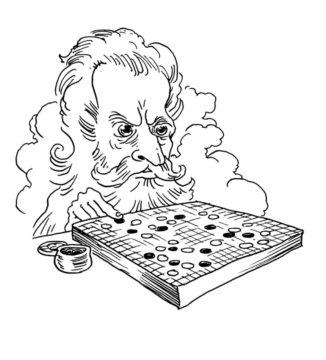 Science was supposed to have banished God, but he keeps turning up in our latest technologies. He is the ghost lurking in our data sets, the cockroach hiding beneath the particle accelerator. He briefly appeared three years ago in Seoul, on the sixth floor of the Four Seasons Hotel, where hundreds of people had gathered to watch Lee Sedol, one of the world’s leading go champions, play against AlphaGo, an algorithm created by Google’s DeepMind. Go is an ancient Chinese board game that is exponentially more complex than chess; the number of possible moves exceeds the number of atoms in the universe. Midway through the match, AlphaGo made a move so bizarre that everyone in the room concluded it was a mistake. “It’s not a human move,” said one former champion. “I’ve never seen a human play this move.” Even AlphaGo’s creator could not explain the algorithm’s choice. But it proved decisive. The computer won that game, then the next, claiming victory over Sedol in the best-of-five match.
Science was supposed to have banished God, but he keeps turning up in our latest technologies. He is the ghost lurking in our data sets, the cockroach hiding beneath the particle accelerator. He briefly appeared three years ago in Seoul, on the sixth floor of the Four Seasons Hotel, where hundreds of people had gathered to watch Lee Sedol, one of the world’s leading go champions, play against AlphaGo, an algorithm created by Google’s DeepMind. Go is an ancient Chinese board game that is exponentially more complex than chess; the number of possible moves exceeds the number of atoms in the universe. Midway through the match, AlphaGo made a move so bizarre that everyone in the room concluded it was a mistake. “It’s not a human move,” said one former champion. “I’ve never seen a human play this move.” Even AlphaGo’s creator could not explain the algorithm’s choice. But it proved decisive. The computer won that game, then the next, claiming victory over Sedol in the best-of-five match. The future starts now? Drone footage shows construction beginning on Saudi Arabia’s sci-fi megacity called
The future starts now? Drone footage shows construction beginning on Saudi Arabia’s sci-fi megacity called 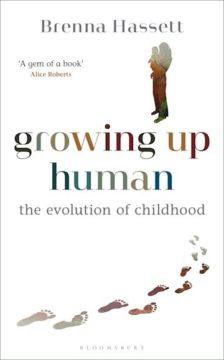 Humans are weird
Humans are weird It’s easy enough to proclaim that we are curious creatures, but what does that really mean? What kinds of curiosity are there? And how does curiosity arise in our brains? Perry Zurn and Dani Bassett are a philosopher and neuroscientist, respectively (as well as twins), whose new book
It’s easy enough to proclaim that we are curious creatures, but what does that really mean? What kinds of curiosity are there? And how does curiosity arise in our brains? Perry Zurn and Dani Bassett are a philosopher and neuroscientist, respectively (as well as twins), whose new book 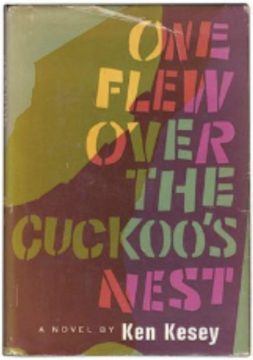 Ken Kesey (1935–2001) was a great admirer of manliness, a quality that would inform his countercultural indictment of America’s attitude toward mental illness, and of postwar America more generally. The darkly comic 1962 novel for which he is known,
Ken Kesey (1935–2001) was a great admirer of manliness, a quality that would inform his countercultural indictment of America’s attitude toward mental illness, and of postwar America more generally. The darkly comic 1962 novel for which he is known,